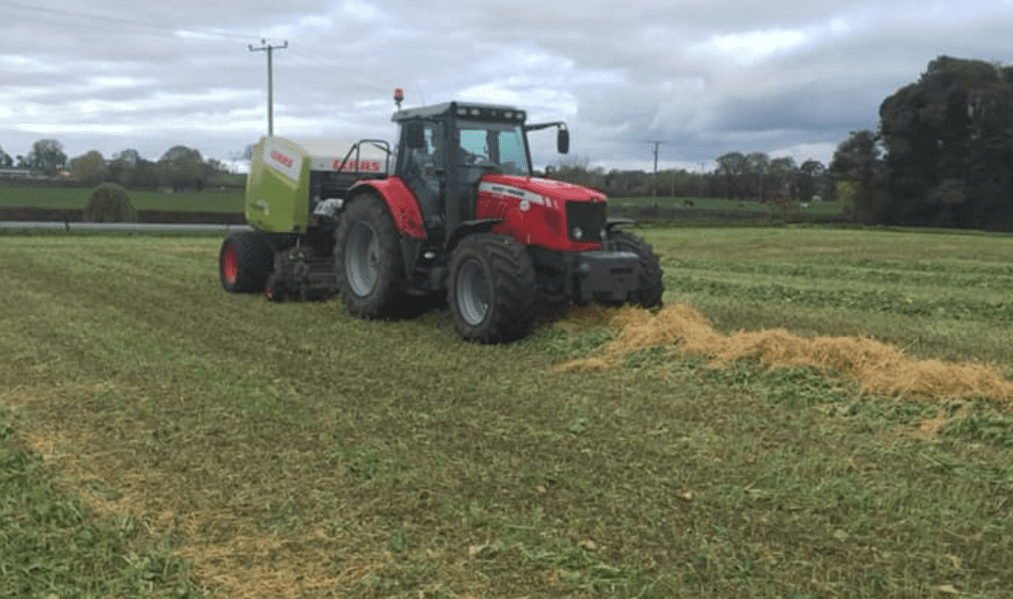Many farmers across the country experienced poor grass growth this summer – due to drought conditions – meaning that silage yields were significantly reduced and a winter fodder deficit was imminent.
In order to try fill the gap in the winter fodder deficit, many farmers established brassica forage crops (i.e. kale or kale-rape hybrids) on their farms as an alternative winter feed for their livestock.
AgriLand compiled a significant amount of information on planting forage crops. However, this article will provide information on some of the key points to consider for farmers choosing to conserve these crops as silage and its subsequent feeding quality.
Many livestock farmers have already begun grazing forage crops with livestock. However, due to the return of the rain, concerns are rising over unfavourable ground conditions leading to poaching.
Therefore, the advice is to graze these crops with light cattle – such as weanlings or light stores – as they will do less damage; sheep are also another option.
An alternative option to grazing these crops in the field – in appropriate conditions – is to zero-graze them daily for immediate feeding to livestock. This is a good way of getting forage crops to heavier-type cattle with minimal ground damage.
Brassica silage
Many farmers have opted to conserve these crops, mainly as baled silage, for feeding during the winter.
Although weather conditions (rain and frost) at present are not favourable, should the weather take a turn for the better, here are a number of key points to consider.
1) Wilting
Although challenging due to the damp conditions and short day length at this time of the year, it is important to try and wilt the crop in the field.
Wilting will reduce the dry matter (DM) of the herbage and – if possible – it should be carried out for two-to-three days.
Wilting will aid preservation as these low DM forage crops can release a significant amount of effluent. According to research carried out by the Institute of Grassland and Environmental Research in the UK, even after wilting, the DM of the silage will range from 14% to 16%.
Also, effluent can build up and leak through the plastic wrapping and disrupt the air tight seal.
2) Soil contamination
As is the case with grass silage, it is essential to harvest the herbage free from soil contamination.
However, as the crop is wilted, it is likely to sink into the stubble, therefore increasing contact with the soil. Furthermore, baling the crop after a prolonged wilt, without soil contamination, can become more challenging.
3) Storage
Wrapping at the site of storage (rather than in the field) is advised. This is particularly important if the stubble is stiff and likely to damage the polythene wrap.
In addition, due to the high water content, bales can be heavy, which will increase the risk of damaging the polythene wrap during handling.
Some farmers have mixed chopped straw with the forage crop – before baling – to help soak up effluent. This will also help to keep the bale structure.
4) Crop quality
Like grass silage, the growth stage of the forage crop has equally important affects on silage quality. Sugars in forage crops will have a key role to play in the successful fermentation and preservation process.
Research suggests that mature forage crops are better for silage making due to more sugars and less crude protein (CP) in the herbage.
A typical dry matter digestibility (DMD) value of 70% is achievable in a crop from 15 weeks to 20 weeks of growth. The DMD of the forage crop does not decrease with increasing maturity to the same degree as grass.
Naturally, the CP of the silage will decrease with increasing maturity. Generally, CP values range from 10% to 20% and higher values are associated with younger crops.
Feeding
As recommended when grazing forage crops – cattle or sheep fed brassica silage must also be fed a roughage source – otherwise, rumen function can become impaired.
Usually two thirds of the diet is made up of brassica silage and the remainder consists of a roughage source such as grass silage, hay or straw.
Some farmers may opt to offer lower allocations of brassica silage in the diet and – therefore – the risk of digestive upsets will be reduced.
When feeding these types of crops, even as silage, it is important to ensure the animals consuming them are offered supplementary minerals – particularly iodine – as brassicas contain compounds that reduce iodine uptake.



